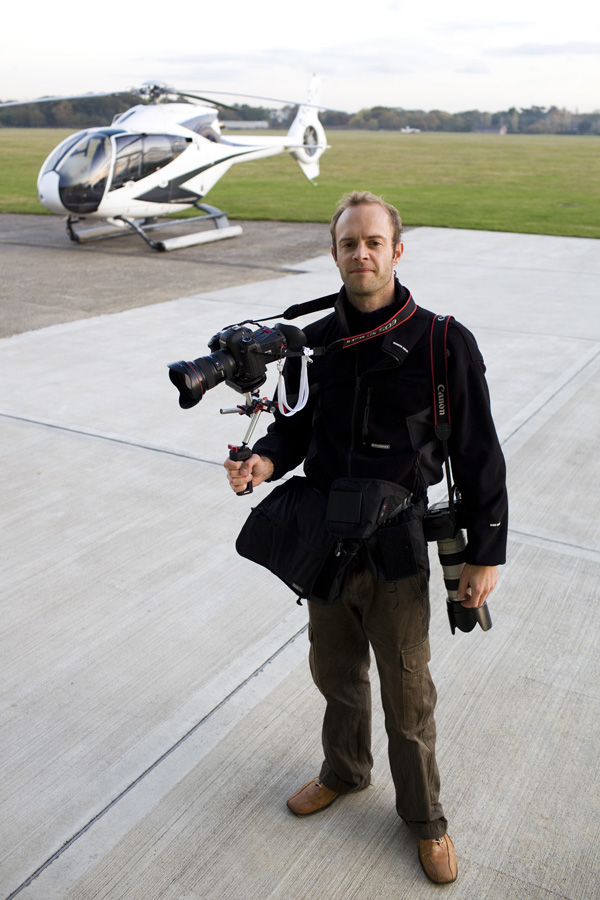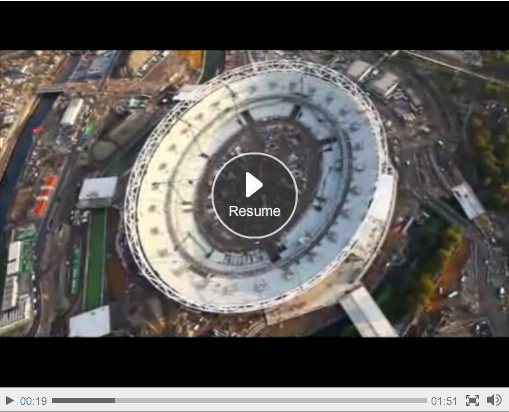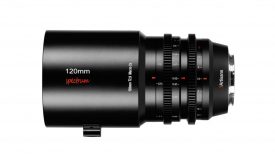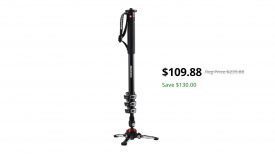
Based in London, I have now been shooting video on a Canon 5d Mark II DSLR regularly since the beginning of 2009 for the Guardian newspaper. Having managed with little more than the camera and a tripod to date, I have recently felt the time was right to start investing directly into the extra equipment. I’ve seen the demand for video rapidly increase from news and corporate clients over the last eighteen months and simply put, there are far more opportunities in having the skills to offer potential clients both options rather than simply stills these days.
So: having finally placing my order for a Redrock Micro rig it finally arrived the night before I was due to visit the Canon Pro Photo solutions event at the Islington Business Design Centre in London last month. I was going along to check out some of the latest Canon products (including the new Eos 1D Mark IV) but also many of the other manufacturers, whose gear I was keen to get my hands on to finally finish kitting out my rig for shooting video on DSLR’s. I duly spent an hour bolting it together watched by my bemused colleague from the Guardian Dan Chung, who was over from his base in Beijing. We were meeting for a quick drink and consultation session on my new gadget as he had been using the Redrock for sometime now, and was going to give me a few pointers on using it. Dan was scheduled to give several talks at the Expo over the following two days; talking about his experiences to date, he presented a “how to” on shooting video on a DSLR, beautifully illustrated to the audience with some short exerts from his work which demonstrated his increasing mastery over the video he shoots on DSLR’s. Along with my other colleague from the Guardian, Sean Smith, who also talked about his multimedia and video experiences, primarily from his recent “embed” trips in Afghanistan over the last couple of years; they both turned out to be one of the highlights out of the series of seminars presented at the Expo.
Overnight I was presented with my first opportunity to try the Redrock out when I received a call from the Guardian newspaper and asked to shoot an aerial video the following day of the latest developments at the Olympic site over in east London. On finding out how small the helicopter for the trip sounded, and realising how little equipment I was going to be able to take with me, I realised I’d need to re-think my approach. The door on my side of the helicopter was going to be removed, leaving nothing between me and the great outdoors but a seat belt, to allow me an unobstructed shooting area, so balancing a large-ish rig like the Redrock, changing lenses mid-flight, and everything else that might need juggling with, sounded like a nightmare, if not downright impossible. This proved a good guess as when it came to getting into the chopper and strapping in, the pilot made me go through all of my equipment that was either strapped around me or inside a host of pouches and zip pockets to take only really essential gear. He then wanted a complete demonstration of exactly how I proposed to change lenses, data cards and batteries in mid-air without dropping anything and killing someone 1500 ft or so below us.
Before I left the Expo to get to the airfield in north London, I passed by a stand showing off some of the latest Zacuto gear, rigs and viewfinders which I had noticed earlier on that day. I got chatting to Den Lennie from F-Stop Academy who was there talking to visitors, amongst other things, about the latest addition to his DVD guide series, how to shoot video on a Canon 7D. I told him where I was headed off to and he suggested I try out his Zacuto Tactical Shooter rig and the Zacuto Z-Finder as a solution to the space problem I was anticipating in the helicopter. This was an unexpected opportunity to checkout a direct rival to my rig, which I reckoned was worth postponing the Redrock experience for. As I’d not yet invested in a viewfinder, (I’m also considering the LCDVF viewfinder which is just coming onto the market and is considerably cheaper) I took both and headed up to the north London aerodrome.
Once the pilot had finished instructing me about safety with my gear we took off and headed over northeast London. We had a perfect day for it. The sun had come out after a cloudy, overcast morning and the light was soft, if slightly hazy. I had two Canon 5D Mark II’s with me (the second to grab the odd still on the way to the Olympic site) and the first sporting the very light-weight, but solidly built Zacuto rig, at the ready. The gun grip meant I could tuck the support tightly into my shoulder, which as I found out immediately, was essential to cut down on the vibrations and turbulence buffeting us. As the helicopter was so small, smaller than previous aircraft I’ve shot stills from before, motion and turbulence was going to be a problem I was simply going to have to live with. It was impossible to omit it completely, even from the final result despite the worst being edited out. Only a gyroscopic camera stabiliser would deliver perfectly smooth footage, a little out of budget for this assignment. From my confined and semi-restrained position in my seat, I found the compact size of the rig perfect for the job. It felt strong and solid, and handled intuitively. I could imagine having a similar set-up (with an added top mic attached, something like a Rode VideoMic or similar from Sennheiser) slung over one shoulder when covering a news event that looked as if it might warrant video. It would be easy to carry, would never notice knocks or scrapes and could be pulled straight to the eye and provide immediate stability for short bursts of footage – the photographers natural instinct of stills over video is always a conflict, particularly with something major unfolding in front of you, but I could have done with this set-up when covering the G20 protest in London back in April of this year (the Guardian wanted stills and video from all the photographers covering events that day). You can see the results of that day here:
Although not all of this video was shot on DSLR’s (the early footage is from a standard video camera) the latter footage when things got heated between protestors and the police, shows what is possible, especially in these types of situations, with video on a DSLR, and hand held too.
Finally, my first experience of the Zacuto Z-Finder. A piece of kit essential to judge a decent exposure in bright daylight at the minimum, something I’ve struggled with in the past for lack of one. I found an immediate problem in that my left eye is my “viewing” eye and is also much stronger than the right. Using digital DSLR’s for video requires you to view with your right eye, essentially if you are going to see where you are going and what is happening around you as you film, but also so as you don’t have to crane your neck into the side of the camera. Sports photographers will have an advantage here as many of those who have the same problem as I do now, have trained themselves to use their right eye (so as they can see over the very large lenses and follow the action of a football match or similar fast moving events). Apparently it takes years I’m told and not sure if I have the patience for that! So it’s either learn the correct way or make do with a slightly twisted, partially sited filming experience. You can at least mount the cup upside down or roll the rubber surround down to make it entirely usable if this is the situation for you too.
It also took me a while to see past the pixilation caused by looking through the Z-Finder magnifying a small screen so close, but once I’d adjusted to that it felt quite natural. Although, compared to the early days of strapping a makeshift viewfinder or even the Mark I Zacuto Z-Finder to the body of the camera with tape or rubber bands, string etc., there is now a magnetic surround that holds it in place. I did find I knocked it off a little too easily, but then I was in a confined space with a lot of equipment strapped around me, which probably exacerbated this, and there is a lanyard you can attach to either your camera strap or have around your neck to keep it flying off at the wrong moment – and in my case 1500 ft to the ground below. Overall a viewfinder is an essential piece of kit for video and I’m keen to compare it to the LCDVF version soon.
You can see the results of the video here:







